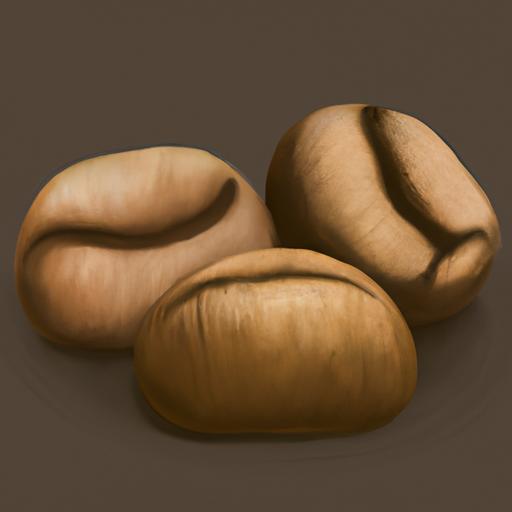Have you ever wondered why some coffee beans taste so much better than others? If youve ever wanted to improve the flavor of your coffee, then youll want to learn how to remove oil from coffee beans.
In this article, well go over the essential knowledge you need to know about coffee oils, why removing oil from coffee beans is important, and then we’ll discuss three different methods you can use to remove oil from coffee beans: steaming the beans, rubbing the beans with a dry cloth, and using an oil-removing machine.
Well also discuss the pros and cons of each method and provide some tips for removing oil from coffee beans.
So, if youre ready to learn more about how to remove oil from coffee beans, read on!.
Table of Contents
Short Answer
To remove oil from coffee beans, you should first let them sit in a dry, airtight container overnight.
This will allow the oil to evaporate.
Afterward, spread the beans out on a baking sheet and bake them in the oven at a low temperature (200-250 degrees Fahrenheit) for about 10 minutes.
Finally, let the beans cool completely before storing them.
This process should help to remove the oils from the beans and make them last longer.
What are Coffee Oils?
Coffee oils are the natural oils present in coffee beans that give the coffee its unique flavor and aroma.
They are responsible for the smooth, rich taste and full body that characterize a good cup of coffee.
Coffee oils are composed of several different compounds, including fatty acids, triglycerides, and polyphenols.
Fatty acids are responsible for the sweetness and smoothness of the coffee, while the polyphenols are responsible for the bitterness.
When coffee beans are roasted, the heat from the roasting process causes the oils to become more concentrated.
This can lead to a bitter taste if the oils are not properly removed from the beans.
Fortunately, there are several methods for removing coffee oils from the beans, and this blog post will discuss them in detail.
Why is Removing Oil from Coffee Beans Important?

Removing oil from coffee beans is an important step in the coffee making process, as oils can create a bitter taste if not removed.
This is because oils are naturally present in coffee beans and can cause the coffee to have a rancid, off-flavor.
Coffee oils also tend to accumulate in the roasting process, making the resulting brew more bitter and unpleasant.
Fortunately, there are several techniques for removing oil from coffee beans, making it possible to enjoy a cup of coffee with a pleasant flavor and aroma.
The most common method for removing oil from coffee beans is steaming them.
This is an effective way of removing the oil without damaging the beans, as steaming helps to break down the molecules that make up the oil.
Additionally, steaming the beans helps to release the essential oils, which add flavor and aroma to the coffee.
Rubbing the beans with a dry cloth can also help, but it is not as effective as steaming.
Finally, using an oil-removing machine is the most efficient method, as it quickly and effectively removes the oil without any additional effort.
These machines are designed to extract the oils from the beans without damaging them, ensuring that the flavor and aroma of the beans remain intact.
Additionally, these machines can be used to remove other contaminants from the beans, such as dirt, dust, and other debris.
Removing oil from coffee beans is an essential step in the coffee making process, as it helps to ensure a pleasant flavor and aroma.
Steaming the beans is the most common technique, but rubbing the beans with a dry cloth and using an oil-removing machine are also effective methods.
Taking the time to properly remove the oil from coffee beans will help to guarantee a cup of coffee with a great flavor and aroma.
Method 1
Removing oil from coffee beans is an important step in the coffee making process.
Fortunately, there are several techniques for removing oil from coffee beans.
One of the most common methods is steaming the beans.
This is an efficient way to remove the oil without damaging the beans.
The process involves exposing the beans to high temperatures, which causes the oils to evaporate.
This can be done in a variety of ways, such as using a stovetop steamer, a commercial steamer, or a specialized oil-removing machine.
The steaming process should take about 5 minutes, and can significantly reduce the amount of oil present in the beans.
Steaming is the most effective way to remove the oil without damaging the beans, and is generally the preferred method for removing oil from coffee beans.
Method 2

Removing oil from coffee beans can also be done by rubbing the beans with a dry cloth.
This method is not as effective as steaming the beans, but it can still be useful in certain situations.
To use this method, simply take a dry cloth and rub it against the beans to remove the oil.
Be sure not to use too much pressure, as this can damage the beans.
This method can be time-consuming, as each bean must be individually rubbed, but it is an efficient way to remove some oil from the beans.
This method is especially useful when you don’t have access to a steamer or oil-removing machine.
Method 3
Using an oil-removing machine is the most efficient way to remove oil from coffee beans.
This method is especially suited to commercial coffee roasters, as it quickly and effectively removes the oil without any additional effort.
The process involves passing the beans through a machine that uses centrifugal force to separate the oil from the beans.
The oil-removing machine works by spinning the beans at a high speed and separating the oil, which is then collected for reuse.
The beans are then cooled and dried before being packaged for retail sale.
This method is fast and efficient, and it helps to preserve the flavor and aroma of the beans.
Additionally, it helps to reduce the waste created by disposing of oil-soaked beans.
The oil-removing machine is a reliable and cost-effective way to remove oil from coffee beans and ensure that your coffee is the best it can be.
Pros & Cons of Each Method

When it comes to removing oil from coffee beans, there are several different methods available.
Each of these methods has its own set of pros and cons that should be considered when deciding which method is best for your needs.
The most common and effective method of removing oil from coffee beans is steaming.
This method is relatively easy to do and can be done with minimal effort.
It also produces the most consistent results, as the steam penetrates deeply into the beans, ensuring that all of the oil is removed.
The downside of steaming is that it requires a bit more time and effort than the other methods.
Rubbing the beans with a dry cloth is another method for removing oil from coffee beans.
This method does not require any special equipment or tools and can be done quickly and easily.
However, it is not as effective as steaming and may not remove all of the oil from the beans.
Finally, using an oil-removing machine is the most efficient method of removing oil from coffee beans.
This method is the quickest and most effective way to remove the oil without damaging the beans.
However, it is more expensive than the other methods and requires the use of special equipment.
When it comes to choosing the best method for removing oil from coffee beans, it is important to consider your own needs and budget.
Steaming is the most common and effective method, while rubbing the beans with a dry cloth is the simplest and most cost-effective method.
Finally, using an oil-removing machine is the most efficient method, but it is also the most expensive.
Tips for Removing Oil from Coffee Beans
When it comes to removing oil from coffee beans, it is important to use the right technique for the best results.
Steaming the beans is the most common and effective approach, as it removes oil without damaging the beans.
Rubbing the beans with a dry cloth can also help, but it is not as effective as steaming.
Finally, using an oil-removing machine is the most efficient and fast way to remove the oil without any additional effort.
When steaming the beans, it is important to ensure that the water temperature is not too high, as this may cause the beans to become over-cooked.
The beans should be steamed for a few minutes until the oil is removed.
Once the oil is removed, the beans should be immediately cooled to prevent them from becoming too dry.
When rubbing the beans with a dry cloth, it is important to use a gentle and light motion.
Too much pressure or vigorous rubbing may damage the beans.
Additionally, it is important to make sure that the cloth is clean and free from dust, as this could affect the flavor of the beans.
Using an oil-removing machine is the most efficient way to remove oil from the beans.
This type of machine is designed to quickly and effectively extract the oil from the beans without any additional effort.
It is important to follow the instructions for the machine, as this will ensure that the beans are processed correctly and that the oil is removed without any damage to the beans.
Finally, it is important to remember that removing oil from coffee beans is an important step in the coffee making process.
Taking the time to properly remove the oil will ensure that the beans are of the highest quality and that the resulting cup of coffee will be flavorful and delicious.
Final Thoughts
Removing oil from coffee beans is an integral part of the coffee making process to ensure a tasty cup of coffee.
Fortunately, there are several effective methods for removing oil from coffee beans.
Steaming the beans is the most common and effective method, while using an oil-removing machine is the most efficient.
By following the tips provided, you can quickly and effectively remove the oils from your coffee beans and enjoy a flavorful cup of coffee.
So, take the time to remove the oils from your coffee beans and enjoy a delicious cup!.

